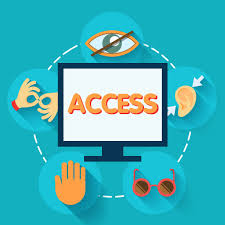 Testing the web site is a key activity to ensure Web Accessibility for All. Testing allows us to find and understand issues existing in our website to be rectified while developing websites. There are various techniques to testing accessibility in websites. Some of them are listed below:
Testing the web site is a key activity to ensure Web Accessibility for All. Testing allows us to find and understand issues existing in our website to be rectified while developing websites. There are various techniques to testing accessibility in websites. Some of them are listed below:1. Code Scanning
There are many tools available on the internet that can help us by automatically detecting accessibility issues. These tools can be used to test the accessibility status of our web pages during the development stage and when performing web accessibility audit for websites.
These tools are valuable in identifying and rectifying preliminary web accessibility issues during the development stage. After completing code scanning and making sure that there are no detectable issues, we should carry out other forms of more detailed and manual testing methods as well.
Some of the more popular testing tools available in the internet are:
- AChecker
- WAVE
- Total Validator
2. Visual Review
Many issues and rectifiable measures can be figured out about the state of accessibility in a website just by visual browsing with the following questions in mind:
- Can the content be easily read?
- Can the forms for collecting input be used effectively?
Paying particular attention to visual components that might not work well can help us find these issues. For example, we should be asking questions like:
- Is the font size too small?
- Do the colors of the background and the text possess proper contrast?
The following steps can be taken while doing visual review of websites:
- Turn off CSS (Cascading Style Sheets) in the website. This will give you an overview of how screen readers will interpret your website. See if the content has a logical flow and structure even without any styling.
- Try using the built in browser text enlargement functions. Make sure that they work.
- Try navigating through the website using only the keyboard. Make sure all links and functions accessible.
Example Tools:
- Color Contrast Analyzer
- Developer Console on Chrome and Firefox
3. Manual Testing with Screen Readers
The best way to make sure that your website is properly usable with screen readers, is to try and use it yourself. Try to navigate the website using screen readers using only the keyboard and simply turn off the monitor and attempt to use the website.
- Navigate around the website and determine how much information can be accessed with screen readers.
- Make sure there isn’t any information that can not be reached this way.
- Try reading headings, navigations, images, and also test more complex features like forms, inputs and tables.
Example Tools:
- JAWS
- NVDA
- VoiceOver
- Windows Light
Other Tools
Other than screen readers, persons with disabilities might also use a variety of other tools to interact with website.
For example:
- Screen Magnification Tools – commonly used by people with partial visual impairments to zoom into particular sections for being able to read the content better.
- Voice Control Tools – Persons with motor disabilities use voice command tools as the means to interact with websites as they cannot properly use a mouse or a keyboard. These people navigate using voice commands like “next link” and “go”.
Testing with these assistive technologies also gives you in-depth knowledge about accessibility issues present in your website.
Example Tools:
- ZoomText Magnifier
- Dragon Naturally Speaking
4. Human Testing
The most thorough approach to ensure accessibility in websites is to ask persons with various disabilities to test your website and give feedback on what needs to be taken care of what needs to be better. Persons with disabilities can provide meaningful insights on the way they use and interact with websites and can help you uncover subtler issues.
Obviously, this technique is time consuming and requires a lot of resources. This method can be done after going through the above mentioned methods to make sure that nothing was ignored in the process.
Various Disability organizations might be able to help you make this test by bringing in human testers for your website.

